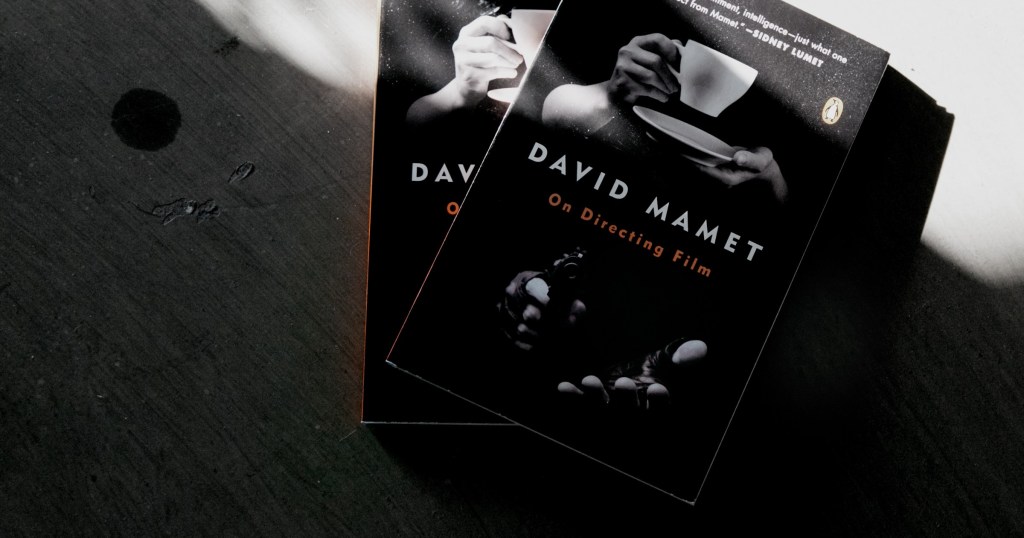
David Mamet’s On Directing Film
What a marvelous breath of fresh air! I mean, Jesus, he goes through so many issues I have with modern, American movies and he does so with great humour and startling intellect.
This book is more of a transcript from a class Mamet taught at Columbia University, where he workshops the dramatic ideation process with students. It’s really helpful to read him work through film ideas with them on the fly; identifying generic troupes and pushing them past what is average, what he calls “inflected” visuals.
What’s great about his workflow is that it feels wonderfully organic but follows the logical syllogism of dramatic, dialectic story argumentation. Often, when dramatists talk about dramatic structure, students tend to get dogmatic – or they completely reject the notion that there is any order to the storytelling process (both of which are dangerous).
Mamet does a fantastic job of drawing an analogy to these “rules,” recounting a conversation with a ship captain and a passenger. The passenger asks, “With all the possible canals and twists and turns and pitfalls along this sea route, how is it that you can avoid crashing?” The captain replies, “The route is marked.” And that’s the question: why risk it haphazardly? While I think it’s important to question any rules, it’s helpful to know why they’re there to begin with.
I think the concept of juxtaposing images to compound meaning is lost on filmmakers today. They may know what the Kuleshov Effect is, but they don’t effectively use it over the entire course of their narrative. As you stack images together, the meaning gets magnified and the significance grows alongside your character. This is the first filmmaking book that has overtly stated that, in the concept of “uninflected” shots.
Most American movies, and other mainstream movies, are produced under a system that doesn’t understand how life works – and they have little perspective to offer that’s of value. Writers explain away nuance with ridiculous backstory: “Hey, I need to sit down because I just got back from Vietnam….” What the fuck? ![]()
One example I liked in this book was the following exchange: a guy calls up a buddy to demand money back that he lent his friend. With the usual backstory approach, you’d have the guy answer the phone like, “Hello, Johnny, this is Cal. I’m calling to let you know that I’m coming over to get that money you owe me, so you better be there when I arrive.”
But dialogue isn’t supposed to just fill in the spots that the visuals can’t; the dialogue is what people use to get what they want. So a more accurate phone call would just have “Cal” bark into the phone, “Where the hell were you yesterday!?” It’s that simple.
Most American movies, and other mainstream movies, are produced under a system that doesn’t understand how life works – and they have little perspective to offer that’s of value. Writers explain away nuance with ridiculous backstory: “Hey, I need to sit down because I just got back from Vietnam….” What the fuck? ![]()
What’s great about his workflow is that it feels wonderfully organic but follows the logical syllogism of dramatic, dialectic story argumentation. Often, when dramatists talk about dramatic structure, students tend to get dogmatic – or they completely reject the notion that there is any order to the storytelling process (both of which are dangerous).
Reading this was serendipitous, as David Mamet’s On Directing Film is actually coming out with his own Masterclass – in which I’ve already pre-enrolled. I’m absolutely thrilled about it, as I think he’s one of the few remaining artists that has a core philosophy about drama that is erudite, time-testing, and fascinating to witness.